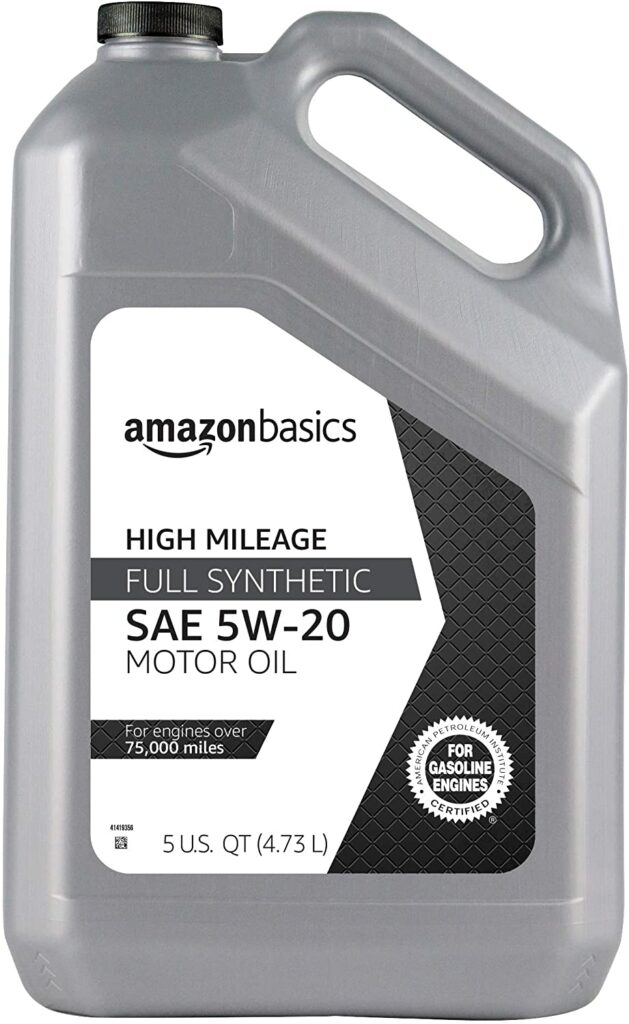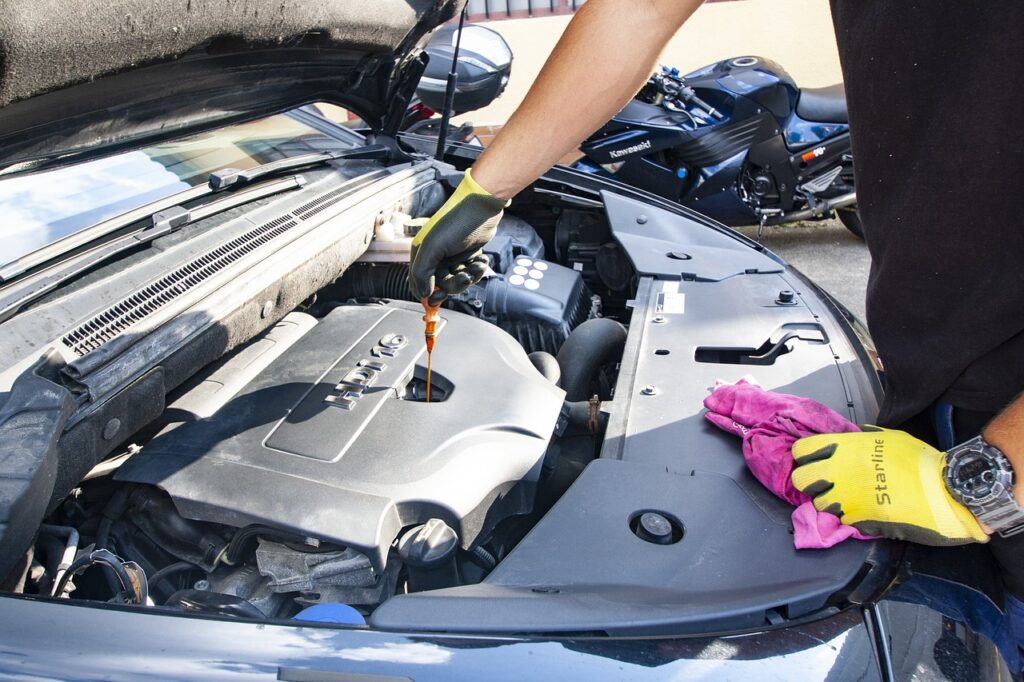How can you tell if your car needs oil? One of the most important aspects of car maintenance is keeping track of the oil level. Changing oil regularly is crucial to keeping your car running smoothly and preventing engine damage. However, for some car owners, especially those new to car ownership, it can be tricky to know when it’s time for an oil change.
In this blog post, we will discuss how to tell if your car needs oil and how to add more if necessary. We will also discuss some common signs that your car may be running low on oil. So, whether you are a beginner or an experienced driver, read on for tips on keeping your car in good shape!
What Is an Engine Oil?

Before we get into how to tell if your car needs an oil, let’s briefly talk about what engine oil is and why it’s so important. Engine oil is a lubricant that helps keep your car’s engine components moving smoothly. Over time, engine oil breaks down and becomes less effective. It can lead to increased friction and wear on engine parts, which can ultimately cause engine damage. For this reason, it’s essential to change your oil regularly.
Most carmakers recommend changing your oil every 5000 miles, but it’s always best to consult your owner’s manual for specific recommendations.
There are various types of engine oil, and the type you use will depend on your car’s make and model. Here are the main types of motor oils: Mineral oil, Synthetic blend oil, Fully synthetic oil, and high-mileage motor oil.
- Mineral oil: This is the most common type of motor oil and is derived from crude oil. It’s a good choice for most cars, but it breaks down more quickly than synthetic oils.
- Synthetic blend oil: This motor oil is a mix of mineral oil and synthetic oil. It offers some of the benefits of synthetic oil without the higher price tag.
- Fully synthetic oil: This is the most expensive motor oil, but it offers the best protection for your engine. It lasts longer and performs better in extreme temperatures than other types of motor oil.
- High-mileage motor oil: This type of motor oil is designed for cars with over 75,000 miles on them. It helps to reduce oil leaks and minimize engine wear.
Now that we’ve talked about what engine oil is and why it’s essential, let’s discuss how to tell if your car needs more oil.
Signs That Your Car Needs Oil

If you neglect this maintenance, your whole engine might be compromised. You might not notice you need to change the oil or your car’s oil is at a low level until you smell, hear, or see anything unusual. So, how can you tell when it’s been far too long since the last time you changed your oil? We’ll go through the warning signs that you must take your car to an auto shop for an oil change.
❗Unusual Engine Noise
If you notice that your car’s engine is making more noise than usual, it could signify that it needs oil. In particular, if you hear knocking or ticking noises coming from the engine, this is a sure sign that something is wrong, and you should take your car to a mechanic right away.
❗Checking Your Oil Level
Another way to tell if your car needs oil is to check the oil level yourself. To do this, simply open the hood of your car and locate the dipstick. The dipstick will have markings that indicate how much oil should be in the engine. If the level is below these marks, you need to add more oil.
❗Engine Oil Warning Light Comes On
Your vehicle will tell you the most evident indication of a problem with your oil. If there isn’t enough oil in the engine, your vehicle’s oil change light will appear; inspect the dipstick to determine what’s going on. The check engine light will come on in the worst-case scenario. It’s your own car’s way of alerting you when issues have deteriorated to the point where the engine is in danger of harm because of faulty components or a shortage of oil.
❗Excess Vehicle Exhaust
Today’s vehicles do not usually emit visible exhaust. Therefore if you notice a smoke trailing behind your vehicle, it might indicate a significant problem. Excess exhaust is usually an indication that the engine oil is too old to perform effectively. Exhaust changes might indicate engine issues such as damaged gaskets, so get this issue checked right away.
❗Dirty, Dark Oil
If you have seen new oil and then compare it to the oil currently in your car, you will notice a big difference. New oil is typically a golden color, while old oil is darker. If you see that your car’s oil has turned black, it’s time for a change.
❗Burning Smell
Does your car smell like it’s on fire? Oil serves two purposes: it lubricates engine components and regulates engine temperature, keeping everything cool. If you notice a burning oil smell, your car is overheating. It could be due to various reasons, but the most common cause is low oil levels.
The oil that is dirty and old is unable to keep the engine cool. As a consequence, The cabin used to have a strong burning smell. In certain circumstances, the odor might indicate an oil leak, which, if not resolved, might result in expensive repairs. It may be time for an oil change if you detect a nose-wrinkling odor within your car cabin.
❗Overheating Engine
Another symptom of low oil levels is an overheating engine. The oil in your car helps keep the engine cool, so if there isn’t enough oil, the engine will overheat. If you notice that your engine temperature gauge is rising, pull over and turn off the engine immediately. Then, check the oil level and add more oil if necessary.
This problem is usually solved by using new oil and ensuring your coolant levels are topped off and not leaking. If your car continues to overheat, even after adding more oil, then you should take it to a mechanic to have it checked out.
❗Shaking While Engine Is Running
If your car is shaking, it could be a sign that the engine is not getting enough oil. It usually happens when the oil level is low, but it can also be caused by other problems such as a faulty spark plug or an issue with the fuel injectors. Idling should be minimized until your car changes oil.
❗Excessive Mileage
Consider if you ever need to change oil sooner than usual if you’ve traveled more than the recommended distance for an oil change. The rule of thumb is to change your car’s oil every 5000 miles, but this may vary depending on the make and model of your vehicle.
❗You Can Smell Oil Within the Vehicle
If you can smell oil inside the car, it is likely due to a leaking oil seal. It will cause low oil levels and should be fixed soon. There are a lot of potential sources for oil to leak, including the following:
- Oil plug: The oil plug is located at the bottom of the oil pan and is responsible for sealing the oil. If this seal is damaged, the oil will leak out.
- Oil filter: The oil filter removes impurities from the oil before it circulates through the engine. If the filter is not working properly, it can cause oil to leak.
- Valve cover gasket: The valve cover gasket seals the area between the valve cover and the cylinder head. If this seal is damaged, oil can leak out.
- Oil sending unit: The oil sending unit is responsible for sending a signal to the oil pressure gauge. If this unit is not working properly, it can cause oil to leak.
- Oil pan gasket: The oil pan gasket seals the area between the oil pan and the engine. If this seal is damaged, oil can leak out.
- Head gasket: The head gasket seals the area between the cylinder head and the engine block. If this seal is damaged, oil can leak into the combustion chamber and cause the engine to smoke.
- Front/rear main seals: The front and rear main seals seal the area between the engine and the transmission. If these seals are damaged, oil can leak into the transmission.
Some minor leaks can be fixed with sealant, but most will require a mechanic to replace the gasket or seal. If left unaddressed, an oil leak can cause low oil levels and potentially damage your engine.
As you can see, there are a few different signs that your car might need more oil. If you notice any of these symptoms, be sure to check the oil level and add more if necessary.
If you’re ever unsure whether your car needs oil, it’s always best to err on the side of caution and take it to a mechanic. They will be able to properly diagnose the problem and recommend the best course of action.
Primary Reasons Why Your Car Needs Oil or a Change Oil

As we’ve seen, there are a few different signs that your car might need more oil. But what are some of the primary reasons your car needs oil or a change of oil? Below are the major reasons to convince you that oil is necessary for your car:
✔️Preventing Engine Damage
Wear and tear, inadequate lubrication, and friction are common symptoms of old engine oil. These can cause serious damage to your engine, including scoring the cylinder walls and bearings, piston ring sticking, and oil pump failure. If you use the appropriate engine lubricants, your engine will be adequately lubricated and have a longer lifespan. Regular vehicle change oil keeps the engine clean and protects it from damage.
✔️Reducing Emissions
Old and dirty oil can cause your car to emit more pollutants into the environment. It is because the oil breaks down over time and doesn’t lubricate the engine as well as it should. As a result, your car will produce more harmful emissions, including carbon monoxide, nitrogen oxide, and hydrocarbons.
✔️Preventing Excessive Engine Wear
Several factors can cause excessive engine wear, but inadequate lubrication is one of the most common. When your car doesn’t have enough oil, the metal parts in the engine rub together, causing friction and heat. It can lead to premature wear and tear on the engine components.
✔️Keeping Your Car Running Smoothly
If you want your car to run smoothly, you need to change the oil regularly. It is because old oil can cause a build-up of deposits on the engine parts, leading to engine problems. Regular oil changes will keep your engine clean and prevent any build-up of deposits.
✔️Better Fuel Efficiency
If you want to save money on gas, you need to regularly change your car’s oil. Dirty oil can cause your engine to work harder, which uses more fuel. By keeping your engine clean and well-lubricated, you’ll improve your car’s fuel efficiency and save money in the long run.
✔️Reducing Frictions to Lubricate Parts
Lubricants play an important role in reducing friction between moving parts. It is because they provide a thin film that helps to prevent metal-to-metal contact. When less friction, the engine will run more smoothly and efficiently. Lubricants also help to protect engine parts from wear and tear.
✔️Ensure a Healthier Vehicle
By regularly changing your car’s oil, you’ll extend its lifespan and ensure that it stays in good condition. Fresh oil will keep the engine clean and well-lubricated, preventing any build-up of deposits. In addition, regular oil changes will help to identify any potential problems with your car early on.
Adding Car Oil
If you’ve checked the oil level and it’s low, you’ll need to add more. It is a simple process that anyone can do. Just follow these steps:
- Turn your car off and allow the engine to rest before adding oil.
- You should also wait for the oil to cool down to don’t get burned.
- Next, loosen the oil filler cap and drop it in a small amount at a time. Remember that it’s always better to add a little bit of oil rather than too much.
- After you’ve added the desired amount, recheck the oil level and make sure it’s at the correct level. You can do this by checking the dipstick.
- Finally, replace the oil filler cap and start up your car.
Changing Car Oil
If it’s time for a full oil change, you’ll need to drain the old oil and replace it with fresh oil. It is a more involved process, but it’s still something that anyone can do. However, if you are not comfortable changing your car’s oil, you can always take it to a mechanic.
To change your car’s oil, you’ll need the following items:
- A new oil filter
- The correct type of motor oil for your car
- A funnel
- A wrench to remove the oil drain plug
- A catch basin or pan to catch the old oil
- You’ll also need some rags to clean up any spills
Once you have all of the necessary items, follow these steps:
- Start by parking your car on a level surface and turning off the engine. You should also put on some old clothes that you don’t mind getting dirty.
- Next, locate the oil drain plug under the car. It’s usually located near the back of the engine, and it will have a wrench symbol next to it.
- Once you’ve found the oil drain plug, place the catch basin underneath it and use the wrench to loosen and remove the plug.
- As the old oil begins to drain, you can replace the oil filter. Just unscrew the old one and screw on the new one.
- Once the catch basin is full of old oil, replace the drain plug and tighten it with the wrench.
Now you can add fresh oil to your car. Just pour it in through the funnel until it reaches the desired level. After you’ve added the new oil, start up your car and check the dipstick to make sure that the oil level is correct. And that’s it! You’ve successfully changed your car’s oil. Just be sure to dispose of the old oil properly.
Frequently Asked Questions
Q: How often should I change my car’s oil?
It’s generally recommended that you change your car’s oil every 5,000 miles. However, this may vary depending on the make and model of your car and your driving habits. If you do a lot of stop-and-go driving or drive in extreme conditions (hot weather, off-roading, etc.), you may need to change your oil more frequently. Consult your owner’s manual or a trusted automotive technician for guidance on what’s best for your car.
Q: What are the consequences of not changing my car’s oil?
If you don’t change your car’s oil, you’re risking serious damage to your engine. It is because old, dirty oil can cause friction and heat, leading to premature wear and tear on engine components. In addition, dirty oil can cause your car to emit more pollutants into the environment.
Q: What type of oil should I use for my car?
The type of oil you use for your car will depend on the make and model of your car and your driving habits. Consult your owner’s manual or a trusted automotive technician for guidance on what’s best for your car.
Q: How much does it cost to change my car’s oil?
The cost of an oil change will vary depending on the make and model of your car and the type of oil you use. However, it’s generally a fairly inexpensive procedure. Depending on the factors mentioned above, you can expect to pay anywhere from $20 to $100 for an oil change.
Q: Can I change my own car’s oil?
Yes, you can change your own car’s oil if you’re comfortable doing so. However, it’s important to make sure that you do it correctly to avoid damaging your engine. If you’re not confident in your ability to change the oil yourself, it’s best to leave it to a professional.
Final Thoughts
Your car needs oil to run smoothly and efficiently. If you don’t change your car’s oil regularly, you’re risking serious damage to your engine. In order to avoid this, it’s important to be familiar with the signs of low oil levels and how to change your car’s oil correctly. By following these tips, you’ll be able to keep your car running smoothly for years to come.

